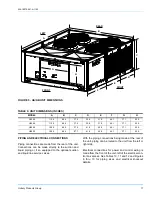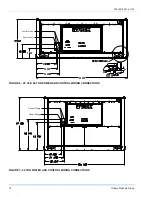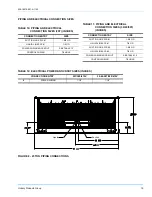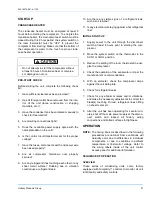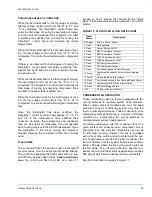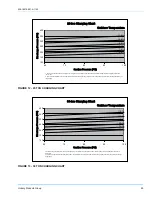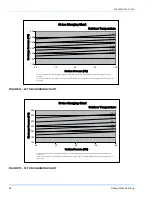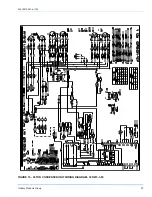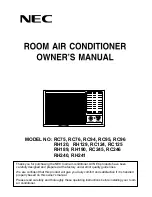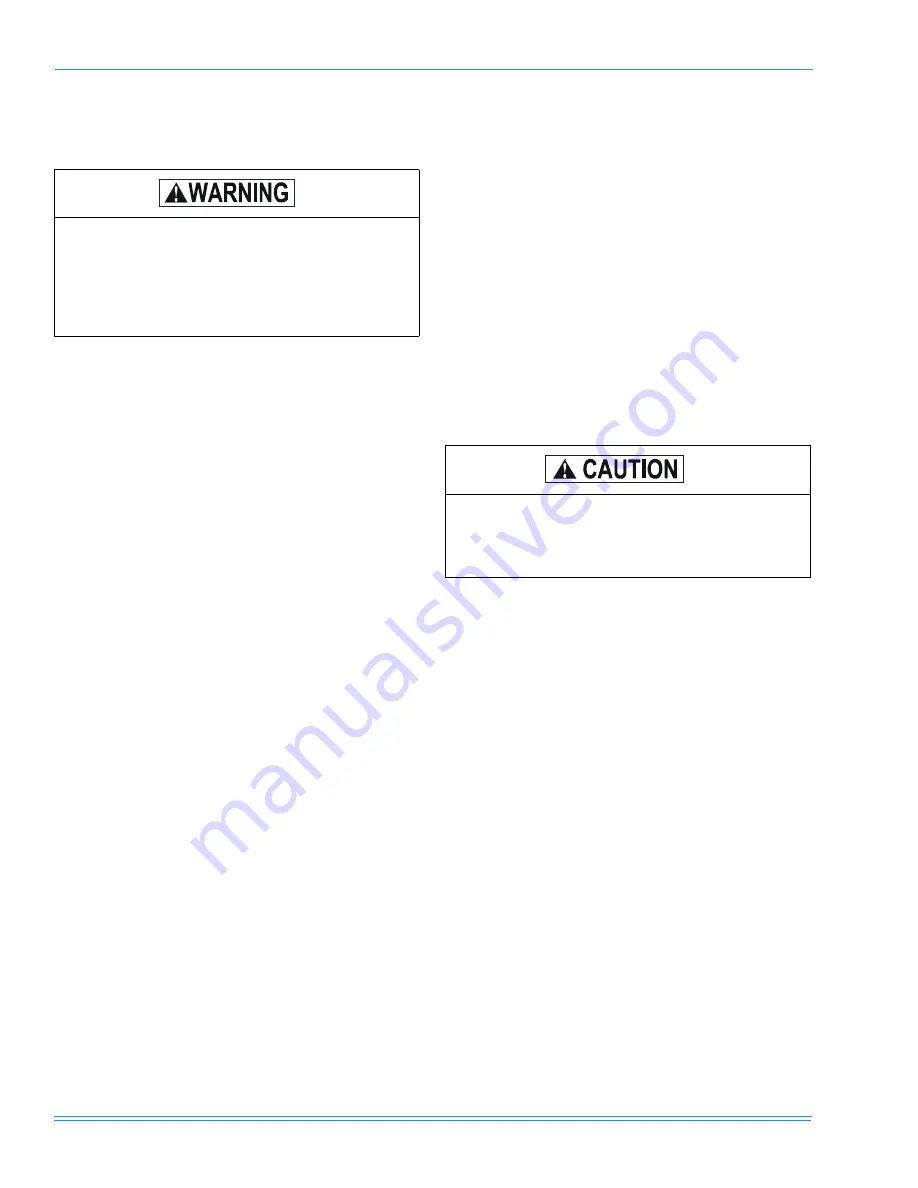
035-18575-001-A-1102
12
Unitary Products Group
The liquid and suction line service valves have an
access port for evacuating, charging and pressure-
checking the system.
EVACUATION AND CHARGING
Determine the required weight of refrigerant using
Table 1, Physical Data and Table 8, Refrigerant Line
Charge. Table 1 includes operating charge based on
the unit plus 25 feet of refrigerant lines. Table 8
includes data required to adjust the charge for line
lengths other than 25 feet.
Connect a vacuum pump through a charging manifold
to both the liquid service port connection on the liquid
line and the suction service port connection on the suc-
tion line. Vacuum pump connection lines should be
short and no smaller than 3/8" OD.
The refrigerant mains and the evaporator may now be
evacuated. After proper evacuation and dehydration,
charge the required weight of liquid refrigerant into the
liquid access connection. After refrigerant flow slows,
start the compressor and continue to charge refrigerant
gas through the suction service port connection.
If proper equipment is not available for weighing in the
refrigerant charge, moisture indicating sight glass may
be used to aid in charging the unit.
After proper evacuation and dehydrating of the unit,
charge the unit as described above until the moisture
indicating sight glass is clear. The correct refrigerant
pressures are indicated as shown in Figures 12
through 15.
Never remove a cap from an access port
unless the valve is fully back-seated with its
valve stem in the maximum counter-clockwise
position because the refrigerant charge will be
lost. Always use a refrigeration valve wrench to
open and close these service valves.
Operating compressor with suction pressure
below 23 psi will result in overheating of the
scrolls and permanent damage to the com-
pressor drive bearing.

















